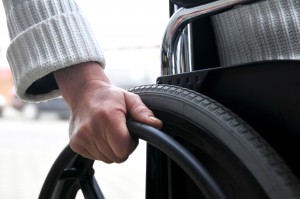Total and Permanent Disability (TPD) Cover

As a business owner, you know that your business isn’t just about work
– it’s your life and your livelihood.
So that means your share in your business is one of your family’s most important assets. It funds the lifestyle that you enjoy today – and will continue to enjoy into the future.
Do I need Total and Permanent Disability (TPD) Cover ?
The risks
- 2.6 million Australians aged under 65 are living with a physical disabilit.
- Australians suffer around 60,000 strokes per year or roughly one stroke every 10 minute.
- About 88% of stroke survivors live at home and most have a disability.
- Over one million Australians need assistance with core activities (such as communication, transport and self-care) due to severe disability.
The reality
Count the number of years to your retirement. Now, multiply this by how much you earn. If the event of permanent disability, this is the amount of money you could no longer provide for your family.
Still, many Australians don’t take out insurance protection because of some of common the misconceptions that can apply:
“I’ll receive a disability pension”
The disability pension only provides around 20% of the average Australian wage.
“My TPD Cover in my default super fund is enough”
Insurance cover inside super only represents 20% of the cover required.
“It doesn’t matter; I’m not the main income earner”
Child care and home help provided by a ‘stay-at-home’ spouse could be worth more than $75,000 per year.
What is TPD Cover?
TPD Cover provides a lump sum payment if you become disabled to the point where you can no longer work.
What are the cover features?
Here are just some of the features you can expect with TPD Cover:
- A choice of disability definitions: Choose the one that best suits your needs from ‘Own occupation’, ‘Any occupation’ or ‘Activities of Daily Living’.
- Flexible packaging options: For instance, combine TPD and Life Cover to broaden your protection in a cost-effective manner.
What are the cover options?
Here are just some of the options you can expect with TPD Cover:
- Standalone or ‘linked’: In the event of a claim, standalone’ cover will not impact the level of any of your other covers. When ‘linked’, a TPD claim payment will result in an equivalent reduction in the linked Life Cover (this is the more cost effective option).
- Inside or outside super: You may be able to hold your TPD Cover inside super and pay premiums using pre-tax dollars. There are often restrictions however, so it’s important you talk to your financial adviser.
- Choice of premium options: ‘Stepped’ premiums increase each year in line with your age, while ‘Level’ premiums remain constant until age 65. (Subject to terms and conditions of various insurers.)
What do the payments protect ?
Sure, you could survive on your savings – for a while. But facing permanent disability would leave very
few options for you and your family to manage your future lifestyle.
A lump sum payment will assist you in meeting the following expenses:
» Mortgage repayments
Help with funds available to protect the family home.
» Day-to-day expenses
Everyday bills can really add up. Without the ability to earn, this money can help cover living expenses like food, utility payments, clothing and schooling.
» Ongoing care
Employing a full-time caregiver is often an expensive necessity. A lump sum payment can assist with the cost as well as help with ongoing rehabilitation.
» Medical bills
This money can help pay for medical treatment that your health insurance is unlikely to fully cover.
» Home modifications
In the event of a claim, you’re likely to need modifications to your home or work environment.
The benefits of protection
In 2010 alone, $460 million in TPD Cover claims for Australians aged 21 – 100.
Causes of claim
- Musculoskeletal– 27%
- Cancer –9%
- Heart Disease/Stroke – 9%
- Mental Health – 7%
- » Hearing/Deafness – 12%
- » Other – 36%.
i AIH W (2008) Australia’s health 2008, Cat. no. AUS 99, Canberra ii Stroke Foundation (2011) Facts, Figures and Statistics, www.strokefoundation.com.au/ facts-figures-and-stats, viewed 12 March 2012 iii Stroke Foundation (2011) Facts, Figures and Statistics, www.strokefoundation.com.au/facts-figures-andstats, viewed 12 March 2012 iv AIH W (2008) Australia’s health 2008, Cat. no.AUS 99, Canberra v Disability pension at 20 September 2009 is $528.50 per fortnight for a disabled spouse with children – Centrelink.gov.au. $1,223.30 weekly ordinary times earnings, Australian Bureau of Statistics, November 2009 vi IFS A (2005) A Nation Exposed: Investigating the Issue of Underinsurance in Australia, Research study commissioned by IFS A and conducted by Rice Walker Actuaries and TNS Australia, Sydney vii IFS A (5 October 2005) Australian mothers – undervalued and underinsured, Media release, Sydney viii The figures shown represent actual claims paid by AMP, Asteron, AXA, BT, CommInsure, OnePath, Macquarie, ML C TAL & Zurich from 1 January 2010 to 31 December 2010.
General Advice Warning:
The information contained within this website does not consider your personal circumstances and is of a general nature only. You should not act on it without first obtaining professional financial advice specific to your circumstances or you may make a decision that is not in your best interests.
